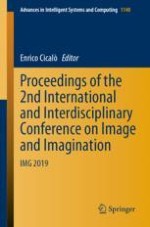2020 | OriginalPaper | Chapter
The Arabic Calligraphy: An Identifying Parameter in Space, Time and Contents
Authors : Osama Mansour, Rossana Netti
Published in: Proceedings of the 2nd International and Interdisciplinary Conference on Image and Imagination
Publisher: Springer International Publishing
Activate our intelligent search to find suitable subject content or patents.
Select sections of text to find matching patents with Artificial Intelligence. powered by
Select sections of text to find additional relevant content using AI-assisted search. powered by
















